Most 1976 nickels are worth only face value, but certain specimens can fetch hundreds or thousands of dollars. High-grade uncirculated coins (MS66-MS67) with “full steps”—distinct, complete lines on Monticello’s steps—are significantly more valuable. The “D” mint mark indicates Denver production, “S” marks San Francisco proofs, while no mint mark signifies Philadelphia minting. Manufacturing errors and defects can also increase value substantially. To determine your coin’s worth, examine the step details on the reverse, check for mint marks, assess the overall condition for wear, and consider professional appraisal for potentially valuable specimens. Pristine condition and full steps are the primary value drivers for 1976 nickels.
That 1976 nickel sitting in your change jar probably isn’t funding your retirement, but before you spend it on parking, you’ll want to check a few key details. While most 1976 Jefferson nickels are worth exactly five cents, a small percentage with specific characteristics have sold for hundreds or even thousands of dollars. The difference between face value and serious collector money often comes down to mint marks, strike quality, and manufacturing errors that are surprisingly easy to spot once you know what to look for.
Understanding the 1976 Jefferson Nickel’s Basic Value
The United States Mint produced Jefferson nickels in 1976 at two facilities: Philadelphia (no mint mark) and Denver (D mint mark). The Philadelphia Mint struck approximately 367,124,000 pieces, while Denver produced around 563,964,000 nickels. These massive production numbers mean the vast majority of 1976 nickels are common circulation strikes worth face value in worn condition.
The composition remained standard for the era: 75% copper and 25% nickel, weighing 5 grams with a diameter of 21.2 millimeters. No special bicentennial design was created for nickels, unlike quarters, half dollars, and dollar coins that year, which actually makes certain high-grade specimens more interesting to collectors focused on regular-issue coins.
In circulated grades from Good-4 through Extremely Fine-45, expect these nickels to trade for five to fifteen cents at most. The real value proposition emerges only in uncirculated condition with specific quality markers.
Mint Mark Locations and Their Impact on Worth
The mint mark on Jefferson nickels appears on the obverse (heads side), to the right of Monticello on earlier issues but moved to the obverse in 1968, positioned to the right of Jefferson’s portrait near the date. For 1976 nickels, you’ll find either a “D” or no mark at all in this location.
Philadelphia (No Mint Mark) Values:
| Grade | Typical Value |
|---|---|
| Good-4 to Fine-12 | $0.05 |
| Very Fine-20 to AU-50 | $0.07-$0.15 |
| MS-60 to MS-63 | $0.50-$2.00 |
| MS-64 | $3.00-$8.00 |
| MS-65 | $15.00-$35.00 |
| MS-66 Full Steps | $125.00-$275.00 |
| MS-67 Full Steps | $850.00-$2,400.00 |
Denver (D) Values:
| Grade | Typical Value |
|---|---|
| Good-4 to Fine-12 | $0.05 |
| Very Fine-20 to AU-50 | $0.07-$0.15 |
| MS-60 to MS-63 | $0.50-$2.00 |
| MS-64 | $2.50-$6.00 |
| MS-65 | $12.00-$28.00 |
| MS-66 Full Steps | $100.00-$225.00 |
| MS-67 Full Steps | $700.00-$1,850.00 |
The Philadelphia issues generally command slight premiums in top grades due to lower survival rates in pristine condition, though the difference isn’t dramatic. No San Francisco proof nickels were struck for circulation in 1976, as proof production had moved to San Francisco exclusively for collector sets.
The Full Steps Designation: Where Real Value Hides
The single most important factor determining whether your 1976 nickel is worth five cents or five hundred dollars is the “Full Steps” designation. This refers to the clarity and completeness of the six horizontal steps leading up to Monticello’s portico on the reverse.
Most nickels, even uncirculated ones, show weakness in strike on these steps. The dies wore quickly, planchets weren’t always perfectly centered, and striking pressure varied. As a result, perhaps only 2-5% of mint state 1976 nickels display complete, unbroken step lines with sharp separation between each level.
To qualify for Full Steps (FS or 6FS), all six step lines must be continuous from one side to the other without breaks, merging, or weakness. Even a tiny interruption disqualifies the coin. Under magnification, you should see distinct, parallel lines with clear spacing between them.
A 1976-D nickel graded MS-65 without Full Steps might sell for $20-25. The same coin with Full Steps jumps to $125-175. At MS-67, the gap widens further: $35-50 without Full Steps versus $700-1,850 with them. Heritage Auctions sold an MS-67 6FS 1976 Philadelphia nickel for $1,880 in January 2023, while a non-Full Steps MS-67 from the same year brought only $58.
Grading services like PCGS and NGC specifically note the Full Steps designation on their holders, adding “FS” or “6FS” after the numerical grade. This third-party authentication is essential for premium prices, as the designation requires expert evaluation and consistency.
Valuable Errors Worth Hunting
Manufacturing errors transform common 1976 nickels into significant collectibles. Unlike intentional varieties, these mistakes happened accidentally during production, making them scarce and desirable.
Off-Center Strikes: When the planchet isn’t properly centered between the dies, you get a partial design with a blank crescent. A 5-10% off-center strike with full date visible brings $15-35. Dramatic 30-50% off-center errors with complete dates have sold for $125-400 depending on eye appeal and which design elements remain visible.
Double Die Errors: Doubling occurs when the die receives multiple impressions during the hubbing process, creating doubled letters, dates, or design elements. While 1976 doesn’t have famous major double dies like some years, minor doubled dies exist. Check “LIBERTY” and the date under magnification. Minor doubled dies add $5-20 to value; significant doubling can reach $50-150.
Clipped Planchets: When the metal strip feeding into the blanking press overlaps, one blank clips another, creating a straight or curved clip missing from the finished coin. Small clips (10-15% missing) trade for $8-25. Larger clips removing 25% or more can bring $40-100.
Broadstrikes: These occur when the restraining collar fails, allowing the metal to spread beyond normal dimensions during striking. The coin appears larger and thinner with a flattened, indistinct rim. Values range from $12-45 depending on how dramatic the spread is.
Strike-Through Errors: Foreign material between die and planchet creates unusual marks or texture. Strike-through grease fills design elements with characteristic smoothness, worth $8-30. Strike-through fabric or wire leaves identifiable patterns worth $25-75.
A Heritage Auctions sale in March 2023 featured a 1976-D nickel struck 35% off-center that realized $288. A 1976 Philadelphia nickel with a dramatic curved clip sold for $156 in the same auction. These aren’t lottery-ticket raries, but they represent real finds still discoverable in circulation or coin shop bargain bins.
How to Authenticate and Grade Your 1976 Nickel
Start with basic visual inspection under good lighting. Use a 5x to 10x magnifying glass or jeweler’s loupe to examine the steps on Monticello carefully. Look for continuous, unbroken horizontal lines. Compare your coin to images of certified Full Steps examples available on PCGS CoinFacts or NGC’s website.
Check the surfaces for contact marks, which appear as small nicks and scratches from coins bumping together. Mint state coins should show original mint luster—a cartwheel effect when rotated under light. Any wear on the high points (Jefferson’s cheekbone, shoulder, or Monticello’s columns) drops the coin below mint state into About Uncirculated grades.
For error identification, weigh the coin on a gram-accurate scale. It should register 5.00 grams; significant deviation suggests a planchet error. Measure diameter with calipers—21.2mm is standard. Off-center strikes and broadstrikes will deviate from these specifications.
If preliminary inspection suggests you have a Full Steps specimen or valuable error, professional grading becomes worthwhile. PCGS and NGC charge $20-40 for standard service, with results in 3-4 weeks. The holder’s tamper-evident design, third-party verification, and population data (how many coins grade at each level) add market confidence and liquidity.
Don’t clean your nickel before grading. Even gentle cleaning destroys original surfaces and can result in a “Details” grade with significantly reduced value. A naturally toned MS-65 nickel worth $25 becomes a cleaned Details-65 worth perhaps $5.
For common circulated examples, self-grading using the Sheldon Scale (1-70) and comparing to images in the “Official Red Book” (A Guide Book of United States Coins) provides sufficient accuracy. Save the grading fees for coins you’ve identified as potentially premium.
Where to Sell High-Value 1976 Nickels
Once you’ve authenticated a valuable piece, several markets offer liquidity at different price points and speeds.
Local coin dealers provide immediate cash but expect wholesale prices—typically 60-75% of retail value. This works well for coins worth $20-100 where you prioritize convenience over maximum return. Call ahead to verify the dealer handles Jefferson nickels and has interest in your specific grade.
Online marketplaces like eBay reach massive audiences but involve fees (12-13% final value fee plus payment processing), shipping costs, and return risks. Research completed listings for comparable coins before pricing. High-resolution images showing the steps, surfaces, and any errors are essential. Expect 7-10 days to sell common material, longer for premium pieces awaiting the right buyer.
Auction houses make sense for coins worth $300 and up, particularly certified Full Steps specimens or dramatic errors. Heritage Auctions, Stack’s Bowers, and Great Collections specialize in numismatics with established bidder bases. Consignment fees run 10-20% but professional photography, detailed descriptions, and targeted marketing to serious collectors often yield prices above retail guides. The process takes 2-4 months from consignment to payment.
Coin shows offer middle ground—direct buyer access without middlemen, but requiring travel and table time. Regional shows occur monthly in most metro areas. Bring your coin in its holder, research comparable sales, and be prepared to negotiate. Shows work particularly well for mid-grade Full Steps nickels ($75-300 range) where you can interact with specialists who appreciate the nuances.
For proof of value, keep records of grading reports, auction results for comparable coins (Heritage Auctions’ Archive Search is free), and screenshots of completed eBay sales. This documentation supports your asking price and helps buyers understand the market.
Starting Your Search Through Pocket Change
The practical reality is that most 1976 nickels you encounter will be worth exactly five cents, but the hunt costs nothing and occasionally pays off. Focus your search on uncirculated rolls from banks, estate collections, and coin shop junk boxes where previous owners didn’t carefully examine their holdings.
When roll searching, examine each coin’s reverse first. Reject anything with visible wear, dark toning, or surface damage. For remaining candidates, use magnification on the steps. You’re looking for six distinct, complete lines—no interruptions, no merging. Mark potential Full Steps coins and examine under stronger magnification (20x-30x) to verify.
Keep a small reference collection showing different step qualities. An obvious no-steps coin, a partial steps coin, and images of certified Full Steps examples help train your eye. The distinction becomes easier to spot with practice, and you’ll work through rolls faster as pattern recognition develops.
Track mint marks separately. While values are similar, knowing which facility produced your best finds helps when researching populations and comparable sales. Note the date clearly—it’s surprisingly easy to mix 1976 with 1975 or 1977 in bulk sorting.
Build relationships with bank tellers willing to set aside customer coin deposits for your review. Some collectors arrange regular pickups of half-dollar and dollar coin boxes; nickels generate less competition. Estate liquidation sales and storage unit auctions sometimes include unsearched coin collections where previous owners saved rolls without examining them closely.
The odds favor patience. You might examine 2,000-3,000 nickels before finding one Full Steps candidate worth grading. But at zero cost beyond time and a magnifying glass, the return on investment for that single MS-66 FS specimen worth $150-250 makes the search worthwhile for many collectors. And unlike buying expensive rarities, you’re learning grading standards and error recognition that apply across the entire hobby.
You may be interested:
- 1859 Indian Head Penny Coin Value Complete Errors List And No Mint Mark Worth Guide For Collectors
- 1911 V Nickel Coin Value Guide Complete Errors List And No Mint Mark Worth Today
- 1902 Dime Coin Value Complete Errors List With O S And No Mint Mark Worth Guide
- 1788 Quarter Coin Value Complete Guide Errors List And D S P Mint Mark Worth Revealed
- 1776 To 1976 Bicentennial Half Dollar Coin Value Complete Errors List And What Your D S And No Mint Mark Coins Are Actually Worth
- 1990 Penny Coin Value Errors List How D S And No Mint Mark Pennies Are Worth Thousands Of Dollars

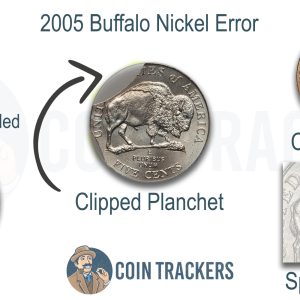
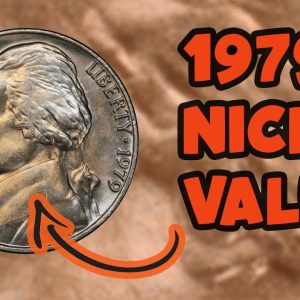
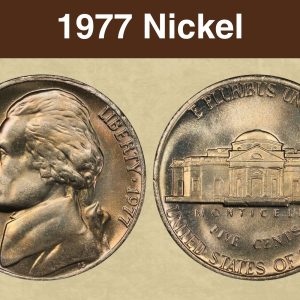
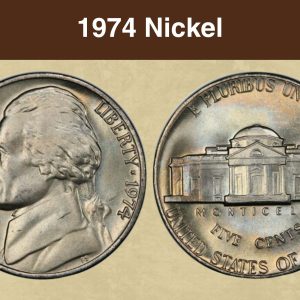
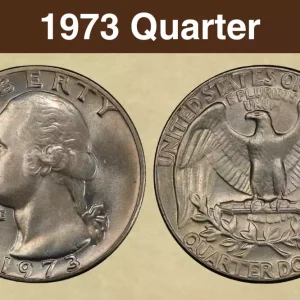
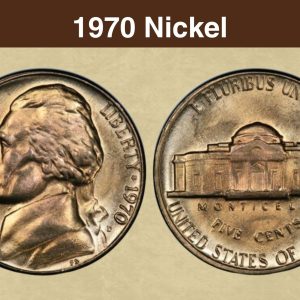
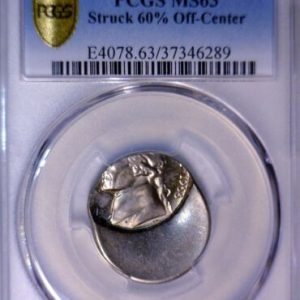
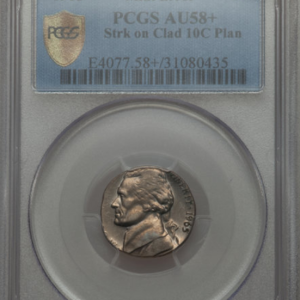
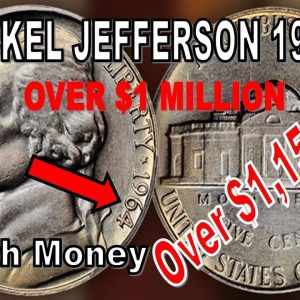
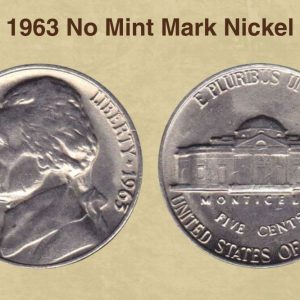
How much is a 1976 nickel with no mint mark worth?
A 1976 nickel with no mint mark is generally only worth a few cents, but can be worth hundreds or even thousands of dollars in pristine, uncirculated condition with “full steps” on the reverse. The vast majority of 1976 nickels produced are common and have little to no collectible value beyond their face value.
What nickel error to look for?
Key nickel errors to look for include doubled dies, where design elements are doubled due to die strikes, off-center strikes, where the coin is struck outside its intended position, and mint mark errors, such as doubled or missing mint marks. Other valuable errors are speared bison on 2005 nickels, the 1943 double die Jefferson nickel, and 1937-D Buffalo nickel three legs.
How much is a 1976 D one cent coin worth?
A 1976-D penny is generally only worth its face value of one cent unless it is in uncirculated condition ( MS-67 or higher) or has a significant mint error. High-grade uncirculated coins (like MS-67 ) can be worth hundreds of dollars, while errors like a double-die obverse or being struck on the wrong planchet can significantly increase its value.
What nickels to look for that are worth money?
Valuable nickels to look for include rare dates and mint marks like the 1913 Liberty Head, 1918/7-D Buffalo, and 1926-S Buffalo. Additionally, check for specific errors such as the 1955 “Double Die Reverse” (DDR) Jefferson, the 1942/1 “Overdate” Jefferson, or the 2005 “Speared Bison” Denver nickel. Other valuable categories include the 35% silver “War Nickels” from 1942–1945 and old Shield or Buffalo nickels minted before 1938.